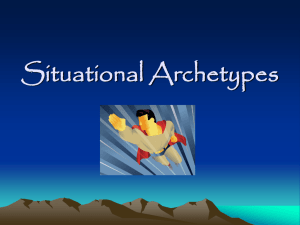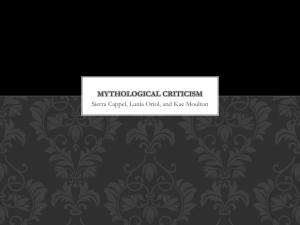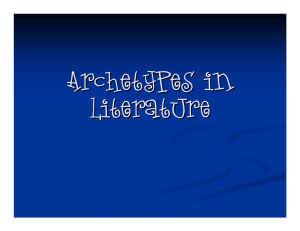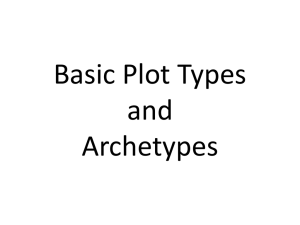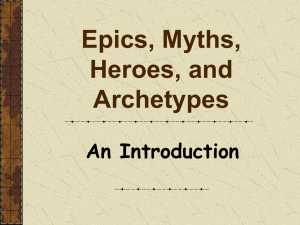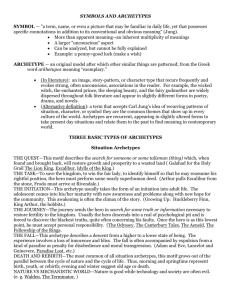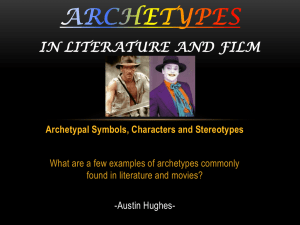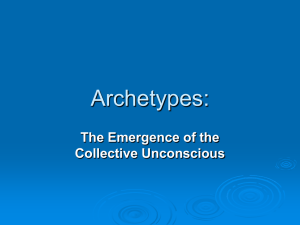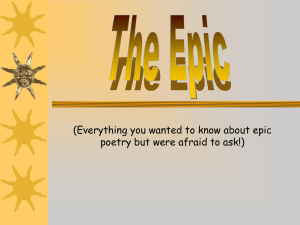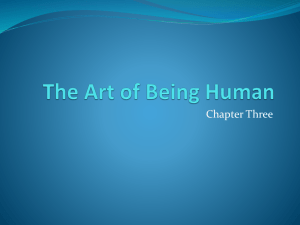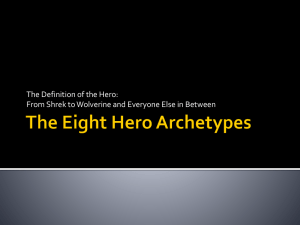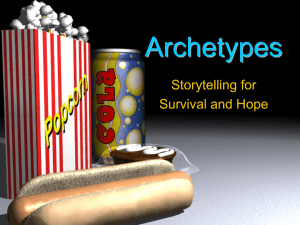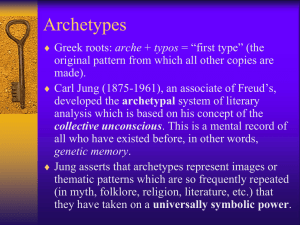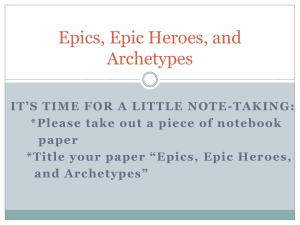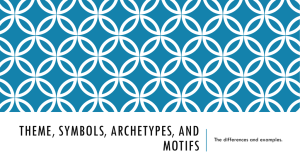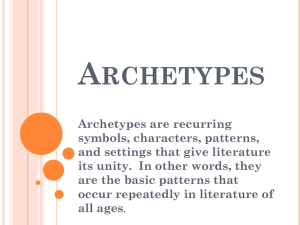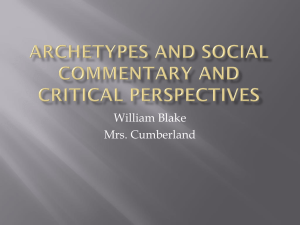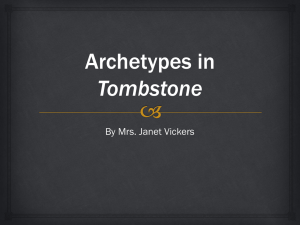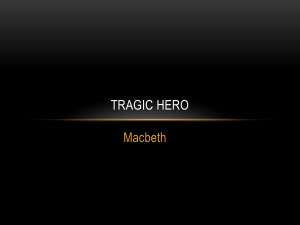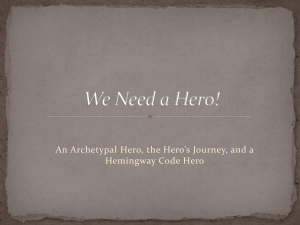Archetypes
advertisement
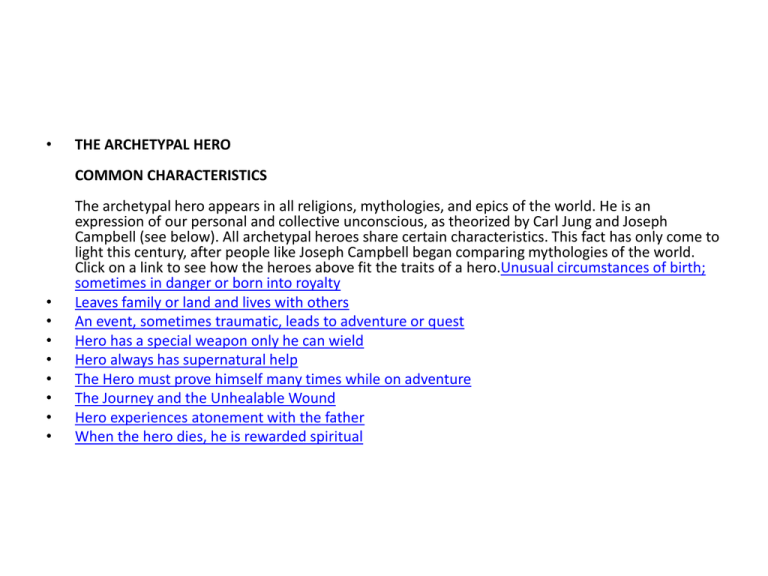
• THE ARCHETYPAL HERO COMMON CHARACTERISTICS • • • • • • • • The archetypal hero appears in all religions, mythologies, and epics of the world. He is an expression of our personal and collective unconscious, as theorized by Carl Jung and Joseph Campbell (see below). All archetypal heroes share certain characteristics. This fact has only come to light this century, after people like Joseph Campbell began comparing mythologies of the world. Click on a link to see how the heroes above fit the traits of a hero.Unusual circumstances of birth; sometimes in danger or born into royalty Leaves family or land and lives with others An event, sometimes traumatic, leads to adventure or quest Hero has a special weapon only he can wield Hero always has supernatural help The Hero must prove himself many times while on adventure The Journey and the Unhealable Wound Hero experiences atonement with the father When the hero dies, he is rewarded spiritual Definition of Archetypes Your critical reading should also include an awareness of archetypes. Archetypes are things patterned after an original, and many are so common that you often don’t need extensive knowledge of the original to appreciate the meaning or intent. • For example, Of Mice and Men is an example of the most notable of archetypal “buddy pairs” • Friends who rely on one another through thick and thin are a staple of literature CATEGORIES Archetypes often fall into one of two categories: character archetypes and situational archetypes. • common character archetypes include the Christ-figure, character sacrificed for the common good. (Simon in Lord of the Flies), • The mentor—The Mentor provides motivation, insights and training to help the Hero (Obi-Wan Kanobi in Star Wars) • The Temptress—woman who destroys society or a man (Julia in 1984, Circe/Calypso/Sirens in Odyssey) • The Tempted woman—The woman whose temptation leads to a decision that destroys the society. (Pandora, Queen Guinivere) • The Innocent—often a girl, who goes out into society (Scout in To Kill a MB, Little Red Riding Hood) HERO ARCHETYPE • Hero: "The Hero is the protagonist or central character, whose primary purpose is to separate from the ordinary world and sacrifice himself for the service of the Journey at hand to answer the challenge, complete the quest and restore the Ordinary World's balance.” – the hero who saves the day (Homer’s Odysseus or J. K. Rowling’s Harry Potter.) MORE ARCHETYPES • Shadow: "The Shadow can represent our darkest desires, our untapped resources, or even rejected qualities. It can also symbolize our greatest fears and phobias.” (Eyes of T.J. Eckelberg, Chillingworth) • Trickster: "Tricksters relish turning the Ordinary World into chaos. Their world and its inhabitants are transformed by their antics. The Trickster uses laughter [and ridicule] to make characters see the absurdity of the situation, and perhaps force a change.“ (Puck, in Midsummer) Situational archetypes • Situational archetypes involve story lines instead of characters • Example-- the quest and the pursuit of an elusive goal, – King Arthur’s relentless pursuit of the Holy Grail – Frodo’s search for the ring in Tolkien’s trilogy., • the loss of innocence/coming of age – Huck Finn’s evolving racial awareness – Holden Caulfield’s recollection of the harsh realities of adulthood. Myth Analysis
